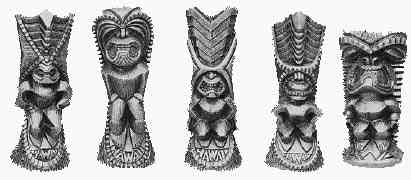For various reasons, including Territorial legislation banning the language in schools, the number of native speakers of Hawaiian gradually decreased during the period from the 1830s to the 1950s. Hawaiian was essentially displaced by English on six of the seven inhabited islands. As of 2001, native speakers of Hawaiian amount to under 0.1% of the statewide population. Linguists are worried about the fate of this and other endangered languages.
The Hawaiian language takes its name from the largest island, Hawaii, in the tropical North Pacific archipelago where it developed, originally from a Polynesian language of the South Pacific, most likely Marquesan or Tahitian. The island name was first written in English, in 1778 by British explorer James Cook and his crew members. They wrote it as "Owhyhee" or "Owhyee". Explorers Mortimer and Otto von Kotzebue used that spelling.
The initial "O" in the name is a reflection of the fact that unique identity is predicated in Hawaiian by using a copula form, o, immediately before a proper noun. Thus, in Hawaiian, the name of the island is expressed by saying O Hawaiʻi, which means "[This] is Hawaiʻi." Note that the Cook expedition also wrote "Otaheite" rather than "Tahiti."
The spelling "why" in the name reflects the [hw] pronunciation of wh in 18th century English.Why was pronounced [hwai]. The spelling "hee" or "ee" in the name represents the sounds [hi], [i], or [i].
Putting the parts together, O-why-hee reflects [o-hwai-i], a reasonable approximation of the native pronunciation, [o hɐwɐiʔi].
American missionaries bound for Hawaiʻi used the phrases "Owhihe Language" and "Owhyhee language", in Boston prior to their departure in October 1819 and during their five-month voyage to Hawai'i.They still used such phrases as late as February 1822.However, by July 1823, they had begun using the phrase "Hawaiian Language."
In Hawaiian, ʻŌlelo Hawaiʻi means "Hawaiian language", as adjectives follow nouns.











